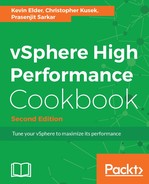SIOC and array-based automatic tiering always complement each other, and we should use them together wherever possible.
Fully automated storage tiering for virtual pools, or FAST VP, intelligently manages data placement at the sub-LUN level, thus increasing overall performance. When implemented on a storage system, FAST VP measures, analyzes, and implements a storage-tiering policy much faster and more efficiently than any user could.
A FAST VP-enabled storage pool contains disks of varying performance levels and costs. It may contain a tier of SSD disks, a tier of 10k SAS disks, and a tier of 7.2k NLSAS disks. Flash or SSD drives perform the fastest, followed by SAS and NL-SAS, respectively. LUNs are created from the capacity from this pool as needed. FAST VP collects the statistics of the LUNs based on the I/O activity in 256 MB slices. These statistics are then analyzed and the most active slices are moved to the highest tier available. A single LUN may have its slices stored on SSD, 10k and 7.2k disks. This is only specific to newer EMC arrays, such as VNX/Unity or VMAX and so on.
At the user's discretion, relocation of the data can be initiated either manually or by an automated scheduler.
All of the data goes through a life cycle and experiences varying levels of activity during that lifetime. For example, when data is first created, it is typically used heavily, and as it ages, data is accessed less often. FAST dynamically matches these data characteristics to the tier of disk drives best suited to the data access patterns. Data will initially sit on the fastest tier available and move to the lower tiers as it ages.
